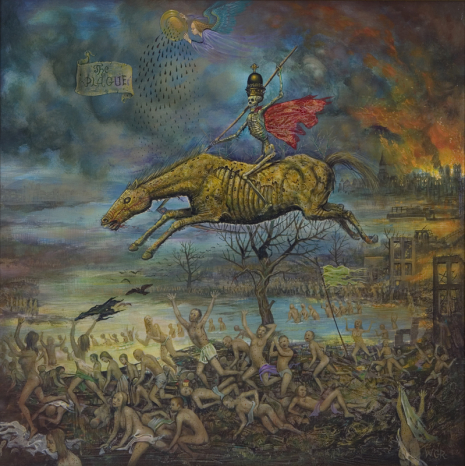
“The Plague” by Wolfgang Grässe (2004).
Four Allied air raids conducted from February 13th to February 15th, 1945 destroyed the German town of Dresden, reducing it to rubble.
Future artist Wolfgang Grässe, just fifteen at the time, survived.
Following the bombings, he would find his way to Italy to study art with his grandfather Friedrich before returning to Dresden. Upon his return, Grässe was arrested and sentenced to death when, while crossing the border in Germany, his possessions were searched revealing his anti-Soviet cartoon of Joseph Stalin swinging from a gallows. However, instead of hanging the then eighteen-year-old, they changed his sentence to 25 years in one of Poland’s many gulags, where he spent eight long years. Grässe had seen and learned a lot in his short time on earth, and while a prisoner, he would use his artwork to help bargain with his captors, offering to draw them anything they wanted, which he would trade for food and perhaps a little extra looking after. As you probably know, “life” in a labor camp meant non-stop work for those deemed useful, such as physical labor or the production of oil and other industrial materials. Grässe’s horrific early life was nearly impossible to shake for the artist, especially his eight years in the gulag.
At some point, Grässe became a Christian, and his paintings contain religious imagery, which is often combined with images associated with death, the day of reckoning, and vibrant displaced erotica. Here’s Grässe shedding some light on his darkness:
“I paint objective, figurative art with high technical perfection to create beautiful, valuable, and qualitative works with interesting visions. My art is called Fantastic Realism (of the Viennese school) influenced by French surreal and Japanese artists such as Hokusai (Edo period), (Utagawa ) Kunisada, and (Utagawa) Hiroshige.”
Grässe’s work has been associated with Surrealism, but that is not the house he lived in as an artist. He is also clearly inspired by the work of Hieronymus Bosch. However, those familiar with Fantastic Realism will quickly recognize his dedication to this genre. In order to reinforce the distinction between Surrealism and Fantastic Realism, let’s allow Grässe sum up the differences between the two artistic pursuits:
“Fantastic Realism cannot be compared with Surrealism as a garden can’t be compared with a jungle. The fantasy of the Surrealist comes from the subconscious without formal order or relation, whereas the Fantastic Realist uses his images selectively. He uses old and new symbols to express his art purposefully and to show that the human situation never really changes its eternal truths. The automatism of images of the Surrealist are a sharp contrast to the meaningful symbolism of the Fantastic Realist.”
Life & Death: The Metaphysical Art of Wolfgang Grässe was published in 2000. It contains approximately 60 full-color images of the artist’s work, if you can find this rather rare volume. In addition to his artwork, you can also watch a short segment below on Grässe from Australian television. The artist lived out his days painting and exhibiting his work in and around Australia after moving there in 1996. He died in 2008.


1991

b_465_474_int.jpg)


“Kingdom of Death” (2000)
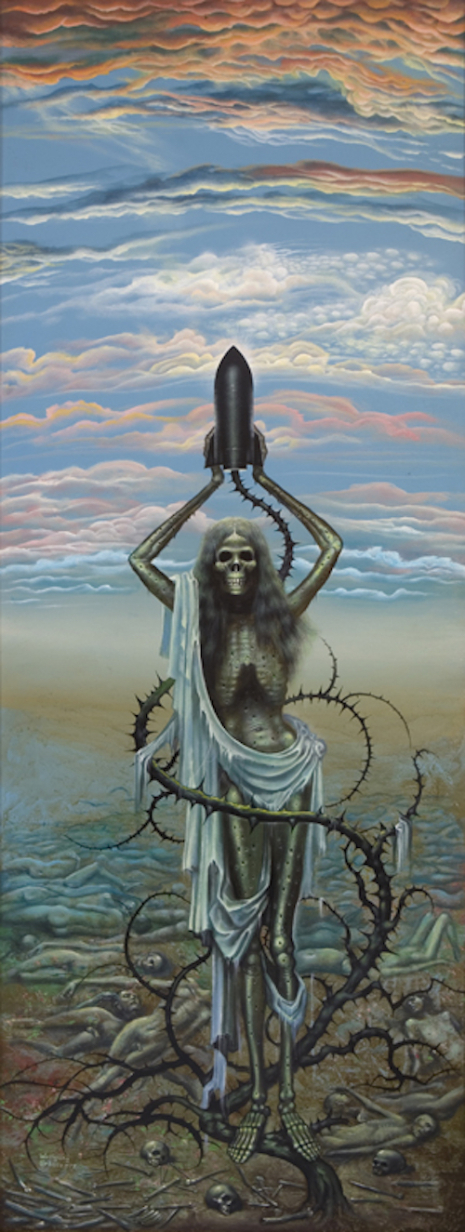
“Death” (1978)

“The Fallen Angel of Love or Sodom and Gomorrah” (1999)

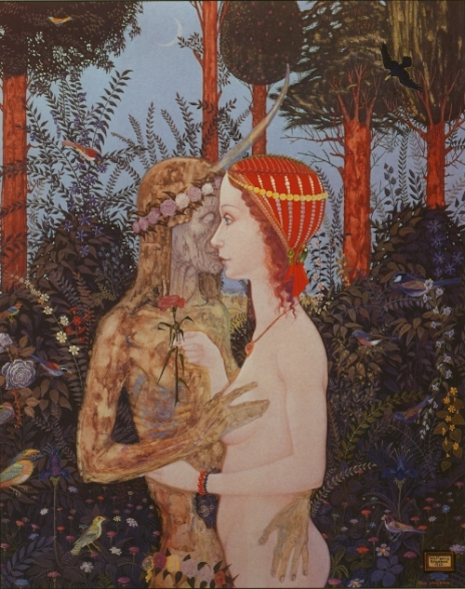
“The Unicorn” (1978)
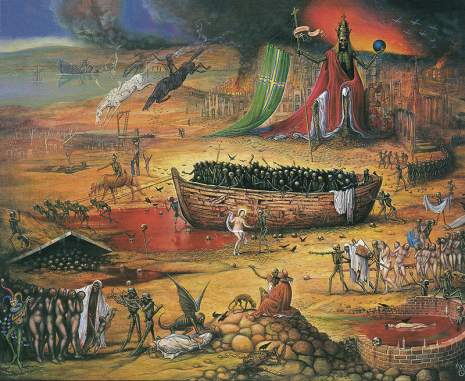

“Dresden”
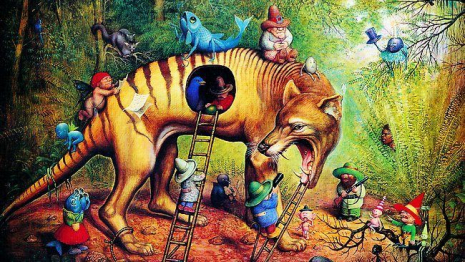
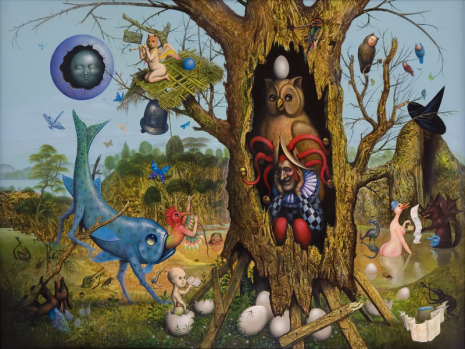
“The Tree of Wisdom” (1990)
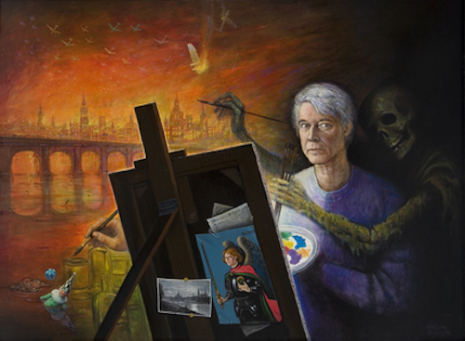
“Dresden 1945 Self Portrait” (1992)
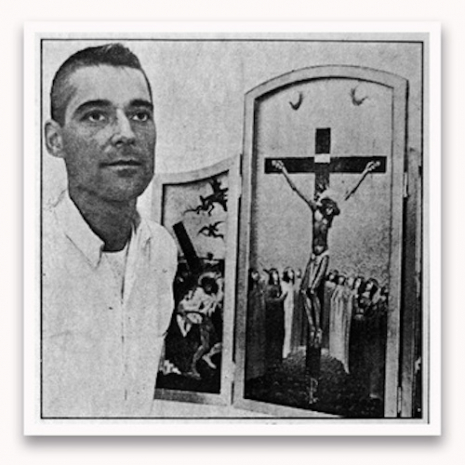
A young Grässe posing with one of his triptychs
And interview with Grässe broadcast on Australian television
HT: With thanks to the great Monster Brains.
Previously on Dangerous Minds:
Monsters, death and the Mona Lisa stripping: Lorenzo Alessandri, father of Italian surrealism
Sex, Satan and surrealism: The unsettling erotica of Michael Hutter
The solitary surrealism of Gertrude Abercrombie
‘Fantastic Planet’: Spellbinding images from the futuristic 1973 masterpiece
From Russia with drugs: The twisted erotic surrealism of Dmitry Vorsin
Yves Tanguy: The master Surrealist who ate spiders and created smutty sketches just for fun